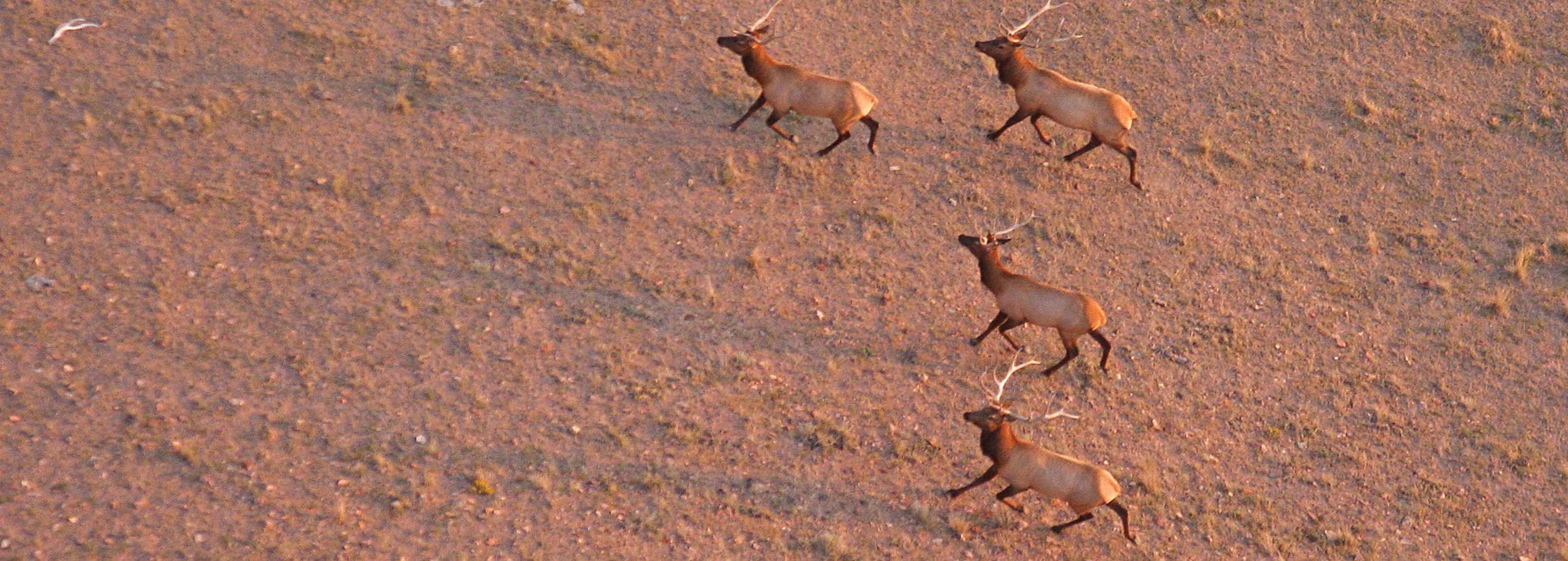I Get Paid for This…
A wildlife survey pilot in Arizona, USA, whose work helps with the conservation of bald eagles and many other endangered species
Interview by Yayeri van Baarsen
How did you get into flying?
My dad took me up in the back of aircraft as a child, and my grandfather was also a pilot.
Initially, I wasn’t sure about it, but in high school I got really interested in small aircraft. I became a geologist, but soon realised that I was better off in aviation.
Tell us about your job…
I’m a wildlife survey pilot for the Arizona Game and Fish Department. We use our aircraft to count species, check their habitats and locate individual animals. As we fly state-wide, I see lots of different scenery. A small part of my job involves general transport and aerial law enforcement – looking out for poachers and ensuring that 4×4 vehicles don’t go off track – but mostly it’s directly wildlife-related, which I love.
Arizona is really rich in wildlife – elk, antelope, wild turkeys, eagles and condors – and flying 200-300ft above the ground gives you a great view. I once spotted a pair of bald eagles getting their nest ready, which was spectacular. And recently, at daybreak, we passed below a mountain peak with three bighorn sheep looking down at us. Most flights happen during the early morning, when the weather is best and the animals are at their most active.
I love going to work. Although I could make more money working for an airline, this job is more fulfilling. I don’t only take up wildlife biologists, I also learn about the animals they observe, the data they’ve uploaded from the collars, and the conservation projects they’re working on. Take, for example, the Sonoran pronghorn antelope – 10 years ago, there were only about 20 in the entire USA, now there are well over 200. Or the bald eagle, which hardly used to breed in Arizona – we’ve currently 135 breeding adults. Being a wildlife pilot isn’t just about flying, it’s part of something bigger. What we do matters.

Ryan sees plenty of different wildlife from his his aeroplane in his job with the Arizona Game and Fish Department
What training did you have?
When I discovered this job existed, I decided to pursue it and obtained the necessary licences. The Department requires lots of tailwheel, mountain-flying and low-altitude time. Flying my Champ and instructing meant that I already had the tailwheel experience, and as I used to live in Colorado, I could fly my little aeroplane around the Rocky Mountains. But unless you’re messing around with the aeroplane, it’s really hard to get experience in low-altitude flying. I managed to get a wildlife survey flying job in the private sector in Wyoming for five years, to get the necessary low-altitude experience.
What’s been your favourite flight?
This March, the first time I flew through the Grand Canyon, locating Californian condors. Flying one of my most favourite aircraft, in the most spectacular scenery, to find most spectacular birds: a flight of superlatives.
As long as we keep off the tourist routes, we can fly more-or-less unrestricted through the Grand Canyon, which virtually no one else is allowed. Flying there is a little challenging but beautiful. Californian condors are critically endangered, which makes it even more special. We don’t see them often, and use receiving gear to discover their location. They have a nine-foot wingspan, so you don’t want to get too close…
And your favourite airfield?
Johnson Creek in Idaho. I went there several times with my Champ. It’s a back-country airport that’s surrounded by very mountainous terrain, but has a nice smooth grass runway. There are no landing fees and they let you camp on the airport for free. It’s heaven on Earth.
Do you get to fly much outside work?
Yes, I still instruct part-time and regularly fly my Champ. Even after flying all week at work, I still love to go up at sunset – it’s just the best. I also really enjoy photography and usually have my camera in the aircraft. Flying changes your perspective on the world, you literally see things from a different angle. I love these views and want to share them.
What’s the most valuable career advice you’ve received?
A wildlife pilot once told me, “In this business, you have to have the confidence of the people you’re flying.” I always keep this advice in mind. It’s so important that you don’t try to impress the passengers or push the aircraft too hard as, even though you’re flying in the Wild West, you definitely don’t want to be seen as a ‘sky cowboy’.
Flying CV
Ryan Lunde partly took the job with the Arizona Game and Fish Dept so he could fly the Cessna 185, “A masterpiece of an aircraft.”
Started work January 2017
Now flying Cessna 185, Cessna 206, Piper Super Cub (all for work) and Aeronca Champ (privately)
Favourite Cessna 185
Hours at job start 5,100
Hours now 5,400
